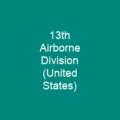The Landing at Nadzab: A Critical Operation in World War II
Imagine a pivotal moment in history where paratroopers and infantrymen leaped into action to capture a strategic location, setting the stage for broader Allied advances. The Landing at Nadzab, conducted on September 5, 1943, was such an operation, marking a significant turning point during World War II.
The Strategic Context and Planning
During this period, the Allies were strategizing to reduce Japan’s threat in the Pacific theater. The US Joint Chiefs of Staff approved operations against key Japanese bases, including Rabaul, which was blocking any Allied advance along New Guinea’s northern coast toward the Philippines or north toward Truk.
The Operation and Its Objectives
General Douglas MacArthur’s vision for capturing Lae, New Guinea, involved a complex plan. The 503rd Parachute Infantry Regiment of the US Army and Australian elements were tasked with airborne operations to support the broader Allied strategy.
The Execution: A Double Envelopment
Planning for Operation POSTERN began at Blamey’s Advanced Allied Land Forces Headquarters, with Major General Frank Berryman leading the process. The plan called for a double envelopment of Lae using two divisions: 9th Division and 7th Division.
The Airborne Assault
On September 5, 1943, fifty-nine C-47 aircraft from three groups flew in formation to drop troops at Nadzab. They were escorted by various fighter planes and accompanied by B-25s carrying fragmentation bombs for ‘sanitising’ the drop zones.
The Aftermath: A Battle of Endurance
After the landing, the 25th Infantry Brigade advanced on Lae, engaging and defeating Japanese forces at Jensen’s Plantation and Heath’s Plantation. The Japanese Army ultimately withdrew from Salamaua and Lae due to heavy losses during the retreat.
The Development of Nadzab
The development of Nadzab was delayed by road upgrades but eventually became a major Allied base in New Guinea. By December 15, 1943, the airfield was operational and played a crucial role in supporting further operations.
Conclusion: A Pivotal Operation
The Landing at Nadzab was more than just an operation; it was a testament to the bravery and strategic planning of Allied forces. The 503rd Parachute Infantry Regiment’s operation at Nadzab is described as a classic textbook airborne operation, influencing thinking about the value of such missions.

You want to know more about Landing at Nadzab?
This page is based on the article Landing at Nadzab published in Wikipedia (retrieved on November 28, 2024) and was automatically summarized using artificial intelligence.







